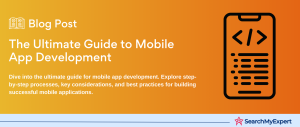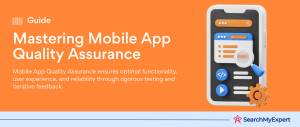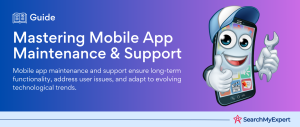Every app developer aspires to create the next big thing. Yet, the journey from ideation to global recognition requires a meticulously planned marketing strategy. By embracing these n app marketing strategies, we aim to help your app garner the attention it deserves.
1. Crafting the Perfect App Website
An app’s website serves as its digital storefront, greeting visitors and potential users. By ensuring it’s engaging and informative, you can enhance both brand recall and conversions.
Landing Page Excellence
Design a landing page that flawlessly contains:
- Captivating visuals, such as in-app screenshots and video demos.
- Persuasive and concise copy.
- Direct links to the App Store and Google Play.
- Compelling calls-to-action (CTAs) to guide user action.
- Authentic social proof showcasing ratings, accolades, and user testimonials.
Blog and SEO Integration
While avoiding the pitfalls of keyword stuffing, curate blogs that leverage strategic keywords to reach your desired audience. This not only boosts your SEO rankings but also establishes your brand authority. Highly successful mobile apps, like Bumble, MyFitnessPal, and Clash of Clans, excel in this approach.
2. Mastering App Store Optimization (ASO)
While SEO tailors your digital space for search engines, ASO refines your app’s presence in app stores. This process can significantly influence user conversion rates.
- Use tools to research and deploy effective keywords.
- Utilize secondary app categories to diversify user reach.
- Prioritize localizing your app store content for international appeal.
3. Leveraging Social Media’s Power
With users spending hours daily on social platforms, social media marketing is non-negotiable.
- Curate and share diverse content types, including blog posts, discussions, and user-generated content.
- Foster community-building and gain invaluable user feedback.
- Integrate social sharing features within your app to promote organic sharing.
4. Influencer Marketing: Authenticity is Key
By partnering with genuine influencers whose brand aligns with yours, you can amplify your app’s reach and credibility.
- Choose influencers wisely, prioritizing authentic representations.
- Collaborate on unique content, from giveaways to in-app features, that resonates with the influencer’s audience.
- Explore various collaboration models, from product placements to influencer-led promotions.
5. Strategizing Paid User Acquisition (UA) Campaigns
UA campaigns, when executed well, can yield remarkable ROI.
- Clearly define user personas and desired actions.
- Continuously analyze performance metrics, optimizing ad spends accordingly.
- Embrace diverse ad formats, including newer avenues like connected TV (CTV) campaigns.
6. User Retention: The Underrated Hero
It’s often more cost-effective to retain existing users than acquire new ones.
- Regularly analyze retention rates to identify and address potential pain points.
- Focus on enhancing the user experience for higher lifetime value (LTV) and return on ad spend (ROAS).
7. Email Marketing: The Classic Powerhouse
Email remains a potent channel for reaching dedicated users.
- Prioritize CTAs in your email campaigns, making them actionable and compelling.
- Personalize content for higher user engagement.
- A/B test different elements to continuously refine your strategy.
8. Media Strategy: Get the Word Out
Engaging with the media can offer unprecedented exposure, especially during app launches, updates, or significant milestones.
- Identify the right media channels and journalists to approach.
- Craft compelling press releases and stories to capture media attention.
9. Analytics and Continuous Improvement
Harness the power of analytics to continually refine all the above strategies. Tools and platforms provide insights into user behavior, conversion funnels, and more. This data-driven approach ensures your strategies remain effective and evolve with changing market dynamics.
10. Engage in Community Building
Building a community around your app can significantly increase user engagement and loyalty.
Forums and Discussion Boards
Create platforms where users can discuss, share tips, and provide feedback. Such interactions foster a sense of belonging and often lead to organic user-driven growth.
Webinars and Tutorials
Host educational sessions that help users make the most of your app. Whether it’s advanced features or new updates, these sessions can boost both usage and retention.
11. Leverage Partnerships and Collaborations
Aligning with other brands or apps can exponentially increase your reach and credibility.
Cross-Promotions
Team up with complementary apps or brands to create mutual promotional campaigns. Such collaborations can introduce your app to new, relevant audiences.
Integration and APIs
By allowing other apps and platforms to integrate with yours, you not only enhance user experience but also increase your app’s visibility and usage.
12. Feedback Loop and Continuous Development
In the ever-evolving app landscape, staying stagnant is not an option. Regularly updating and refining your app is essential.
User Feedback
Actively seek feedback from your users and integrate it into your development roadmap. Such an approach ensures that you’re consistently meeting or exceeding user expectations.
Beta Testing and Early Access
Before major releases, roll out beta versions or provide early access to a select group. This allows you to iron out any bugs and improve based on real-world feedback.
13. Monetization and Revenue Streams
While attracting users is vital, ensuring sustainable revenue is equally crucial for long-term success.
In-app Purchases and Premium Features
Offer additional features or content that users can purchase. This not only generates revenue but also enhances the user experience for those seeking more from your app.
Ad Integration
Strategically integrating ads can be a substantial revenue source. However, ensure ads are relevant and non-intrusive to maintain user satisfaction.
14. Localized Marketing Efforts
As your app grows, global expansion becomes inevitable. Tailoring your marketing strategies to specific regions can yield remarkable results.
Cultural Sensitivity
Understand and respect cultural nuances in your marketing campaigns. This ensures that your messaging resonates with different demographics.
Multilingual Support
Offer your app and marketing content in multiple languages. This simple step can drastically increase your global user base.
15. User Onboarding: The First Impression Counts
A seamless onboarding experience can significantly determine user retention rates.
Interactive Tutorials
Incorporate engaging walkthroughs that familiarize users with your app’s primary features, ensuring they understand its value proposition from the get-go.
Personalization
Allow users to tailor their initial experience, whether it’s selecting themes, setting preferences, or defining goals. A personalized touch can enhance user satisfaction.
16. Gamification: Boost Engagement and Loyalty
Integrating game-like elements can make app interactions more engaging and rewarding.
Achievement Badges
Reward users with badges or titles for achieving certain milestones or utilizing specific features. This encourages prolonged use and exploration.
Leaderboards and Challenges
Introduce friendly competitions or challenges, spurring users to engage more and even invite others to join in.
17. Safety and Privacy: A Priority
In today’s digital age, ensuring user data protection is paramount.
Transparent Policies
Clearly communicate how user data is used and protected. Regularly update privacy policies and ensure they comply with international regulations.
Two-Factor Authentication
Offer additional security layers, giving users peace of mind and protecting their data from potential breaches.
18. Push Notifications: Timely and Relevant
Push notifications can be powerful tools if used judiciously.
User-Specific Alerts
Curate notifications based on user behavior and preferences, ensuring they’re always relevant and timely.
Avoiding Notification Fatigue
Limit the frequency of notifications and provide users with customization options, ensuring they aren’t overwhelmed or annoyed.
19. Affiliate Programs and Referral Marketing
Leverage the power of word-of-mouth by incentivizing users to promote your app.
Reward Systems
Offer tangible rewards for users who refer your app to others, ensuring both parties benefit from the process.
Affiliate Partnerships
Collaborate with influencers or bloggers, offering them a commission for every user they bring onboard.
20. Continuous Learning and Adaptation
The app market’s dynamic nature requires businesses to be ever-evolving.
Industry Trends
Stay updated with the latest trends, ensuring your app remains contemporary and in line with user expectations.
Competitor Analysis
Regularly analyze competitors, understanding their strengths and weaknesses, and strategize accordingly to maintain an edge.
By integrating these strategies, you create a holistic approach to app marketing, ensuring consistent growth and a robust user base. At the core of all these strategies lies a simple truth: understanding and valuing your users will always yield the best results.
This diagram visually captures the interrelationship and flow of the nine marketing strategies, starting with the app’s website and culminating in continuous improvement through analytics.

Lead with Distinction with the expertise of these App Developers.
Table of Contents
Toggle






